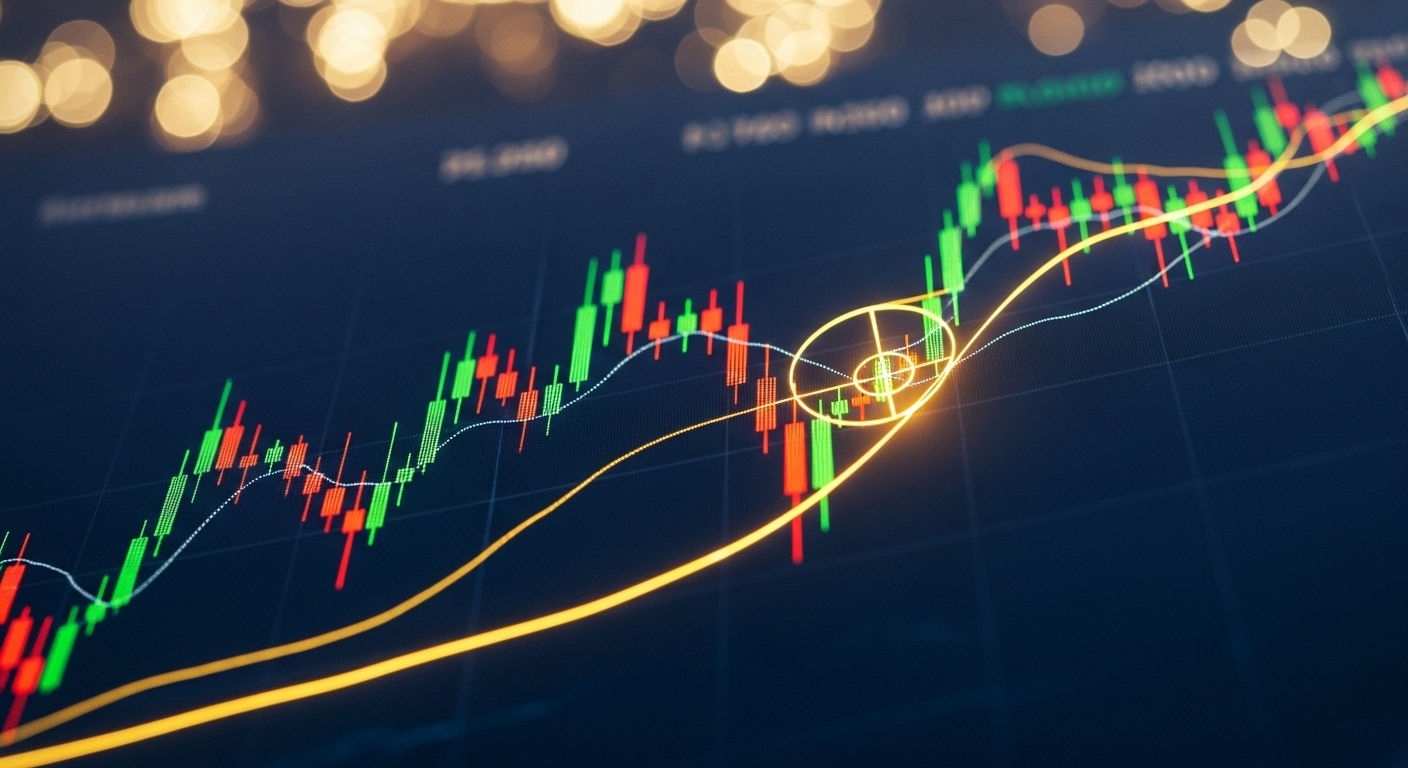Ready to elevate your forex trading game? In the fast-paced forex market, the right tools are essential. This guide explores the best forex indicators, providing the knowledge to refine your trading strategy and boost profitability. Whether you’re a novice or a seasoned trader, understanding and effectively using these indicators can significantly improve your performance.
This comprehensive guide walks you through key forex indicators, explaining their functionality, strengths, and application for informed trading decisions. We’ll cover moving averages, MACD, and RSI, building a solid foundation for your technical analysis. Prepare to unlock the power of these tools and transform your trading approach.
Jump To Section:
- What are Forex Indicators and How Do They Work?
- Moving Averages: A Beginner’s Guide
- RSI (Relative Strength Index): Identifying Overbought and Oversold Conditions
- MACD (Moving Average Convergence Divergence): Spotting Trend Changes
- Fibonacci Retracement: Predicting Support and Resistance
- Combining Multiple Forex Indicators for Better Results
- Choosing the Right Forex Indicators for Your Trading Style
- Conclusion
What are Forex Indicators and How Do They Work?
Forex indicators are mathematical calculations derived from historical price data, volume, and other relevant factors. They’re designed to project future price movements, assisting traders in making informed buy or sell decisions. These indicators are typically displayed as lines, histograms, or other visuals on price charts, simplifying the identification of potential trading opportunities.
The primary role of forex indicators is to filter out market noise, providing a clearer view of prevailing trends. By analyzing these indicators, traders can gain insights into the direction, momentum, and volatility of currency pairs. This information is invaluable for crafting effective trading strategies and managing risk.
Moving Averages: A Beginner’s Guide
Moving averages are among the most straightforward and commonly used forex indicators. They smooth out price data by calculating the average price over a defined period, helping identify overall trends and potential support and resistance levels.
Several types of moving averages exist:
- Simple Moving Average (SMA): Calculates the average price over a specific number of periods.
- Exponential Moving Average (EMA): Places greater emphasis on recent prices, making it more responsive to current market conditions.
- Weighted Moving Average (WMA): Similar to EMA but allows for customized weighting of prices.
Moving averages can identify trends and potential entry and exit points and confirm signals from other indicators. They’re a fundamental tool for any forex trader.
RSI (Relative Strength Index): Identifying Overbought and Oversold Conditions
The Relative Strength Index (RSI) is a momentum oscillator measuring the speed and change of price movements. Ranging from 0 to 100, it primarily identifies overbought and oversold market conditions.
An RSI above 70 typically suggests a currency pair is overbought and may be due for a pullback. Conversely, an RSI below 30 indicates the pair is oversold and could be poised for a rally. Traders often use the RSI to confirm potential trend reversals and optimize their entry and exit timing.
MACD (Moving Average Convergence Divergence): Spotting Trend Changes
The Moving Average Convergence Divergence (MACD) is a trend-following momentum indicator that illustrates the relationship between two moving averages of a security’s price. The MACD line is derived by subtracting the 26-period EMA from the 12-period EMA. A 9-period EMA of the MACD line, known as the signal line, is then plotted on top of the MACD line, acting as a trigger for buy and sell signals.
MACD line crossovers above the signal line often signal bullish sentiment, while crossovers below indicate bearish signals. The MACD can also highlight divergences between price and momentum, potentially signaling trend reversals.
Fibonacci Retracement: Predicting Support and Resistance
Fibonacci retracement levels are horizontal lines on a price chart that highlight potential support and resistance areas. They’re based on the Fibonacci sequence, where each number is the sum of the two preceding ones (e.g., 1, 1, 2, 3, 5, 8, 13, etc.).
Commonly used Fibonacci retracement levels include 23.6%, 38.2%, 50%, 61.8%, and 100%. Traders use these to pinpoint potential entry and exit points, as prices often retrace to these levels before continuing in the original trend. Fibonacci retracement can be a powerful tool for forecasting price movements.
Combining Multiple Forex Indicators for Better Results
While each forex indicator offers valuable insights independently, combining multiple indicators can yield more accurate and reliable trading signals. Using a combination allows traders to confirm signals and minimize false positives.
For instance, combine a moving average with the RSI to validate a potential trend reversal. If the price surpasses a moving average and the RSI is also trending upward, it could present a strong buy signal. Similarly, use the MACD alongside Fibonacci retracement levels to identify high-probability entry points. Experiment with different combinations to discover what best suits your trading style.
Choosing the Right Forex Indicators for Your Trading Style
The optimal forex indicators for you will depend on your trading style, risk tolerance, and market preferences. Some traders favor trend-following indicators, while others prioritize momentum or volatility. Experimenting with different indicators is crucial to finding those that align with your trading objectives.
Consider these factors when selecting forex indicators:
- Timeframe: Certain indicators are better suited for short-term trading, while others are more effective for long-term analysis.
- Currency Pair: Different currency pairs may exhibit varying responses to specific indicators.
- Market Conditions: Some indicators excel in trending markets, while others perform better in ranging markets.
Carefully considering these aspects allows you to select forex indicators that provide a significant market advantage.
Conclusion
Mastering forex indicators is vital for traders aiming to enhance performance and achieve consistent profitability. Understanding their functionality and effective application provides a significant edge in forex trading. Experiment with diverse indicators, establish a robust trading strategy, and manage risk prudently. With the right tools and knowledge, you can realize your full potential as a forex trader.



